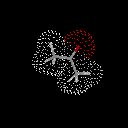





|
This description of nomenclature is intended as an introduction to the topic for general chemistry students. Please note that major simplifications have been made.
To name compounds you have to identify
a compound as
Ionic
Compound
•Ionic
compounds are made from a metal and a nonmetal.
Covalent
Compound
•Covalent
compounds are made from two nonmetals.
Acid
•Acids are
made from H+ and an anion. The anion may or may not be
polyatomic.
Naming a covalent
compound or an acid
is straight forward, but once you have identified that a
compound is ionic you have to determine if the
cation is a type I or a type II
cation.
For example, FeCl3...
Is iron type I (no Roman numerals are needed) or
type II (Roman numerals required) ?
All the cations made from Group 1 and 2
elements can only have a single charge; thus, they are
type I cations.
As far as we are concerned, four of the transition
metal cations are type I, Al3+ (Al is not
actually a transition metal), Ag+,
Zn2+, Cd2+, and all of the
remaining transition metals and P block metal cations
are type II.
Iron is a transition metal; thus, it is a type II
cation.
What is the charge on the iron cation?
All compounds will be neutral, so the charge
of the cation(s) must equal the charge of the
anion(s).
Determine the charge of the anion. For monoatomic
anions use the periodic
table. For polyatomic ioncs you have to remember
the charge.
Chloride is Cl-.
There are 3 Cl's. Each Cl is -1 for a total of -3.
Therefore, the Fe must be +3.
The name is "iron (III) chloride".
Example, Cu(NO3)2...
Cu is a type II cation.
Each nitrate is -1 for a total of -2; therefore, the
Cu must be +2.
The name is "copper (II) nitrate".
Back to
Nomenclature
|

